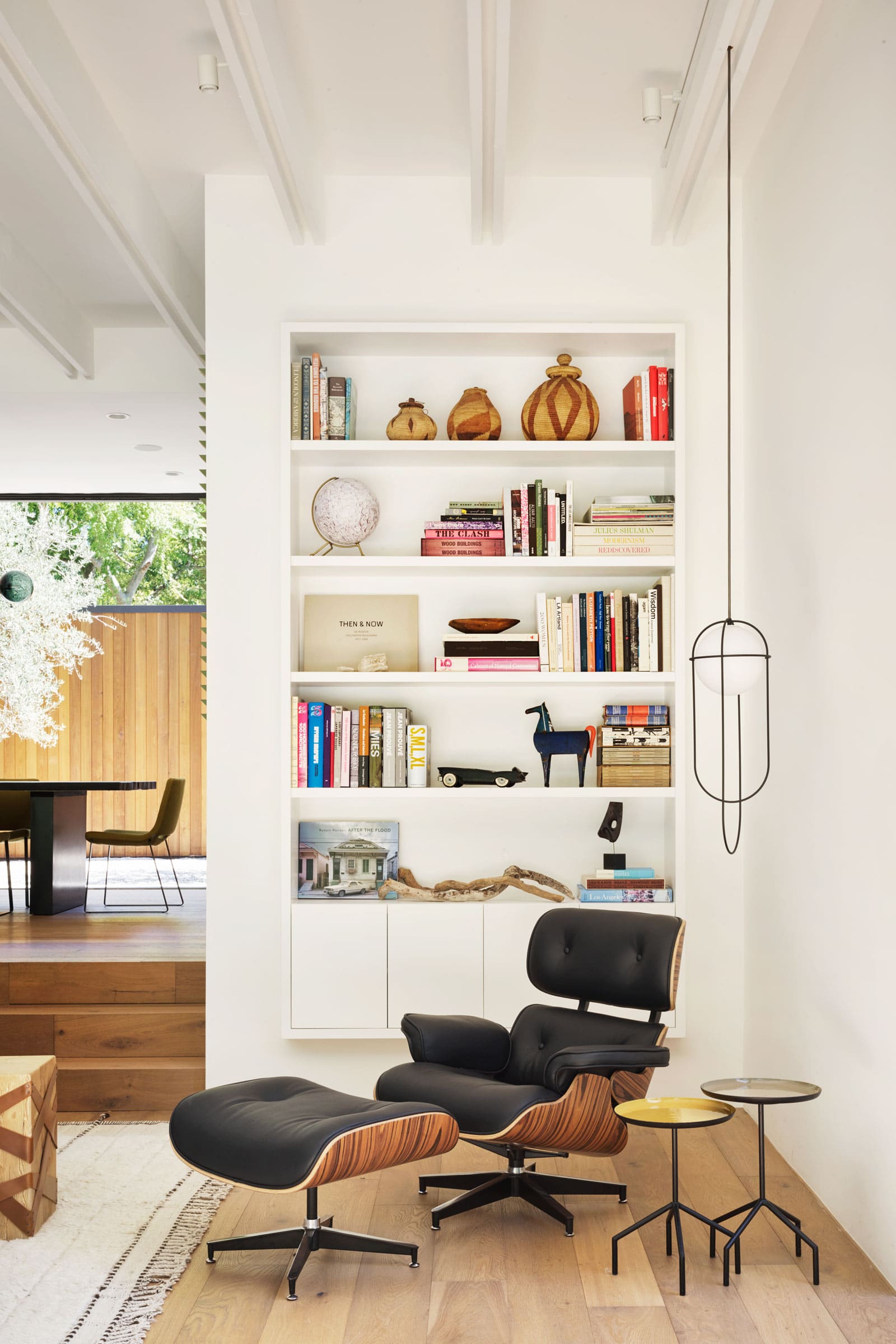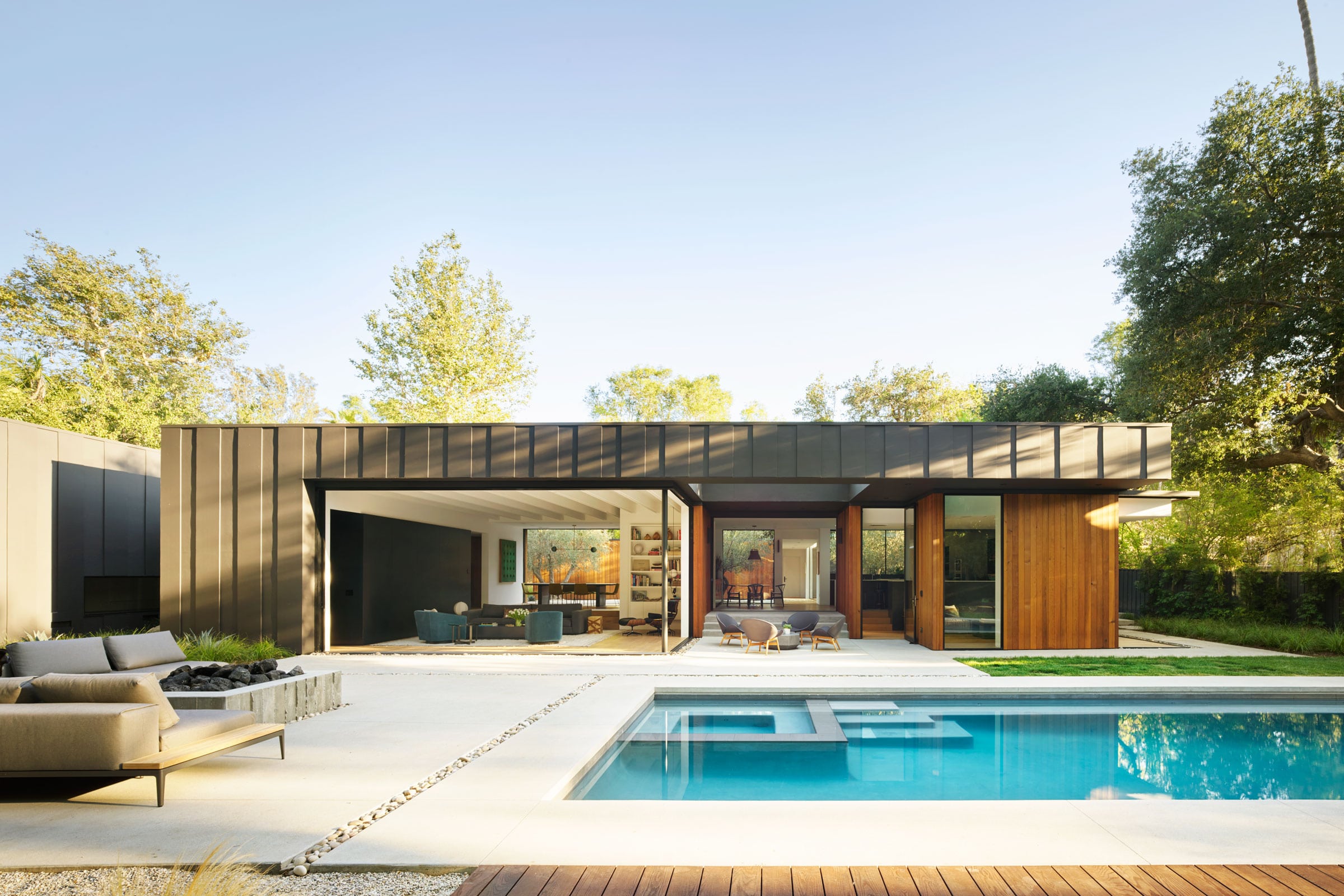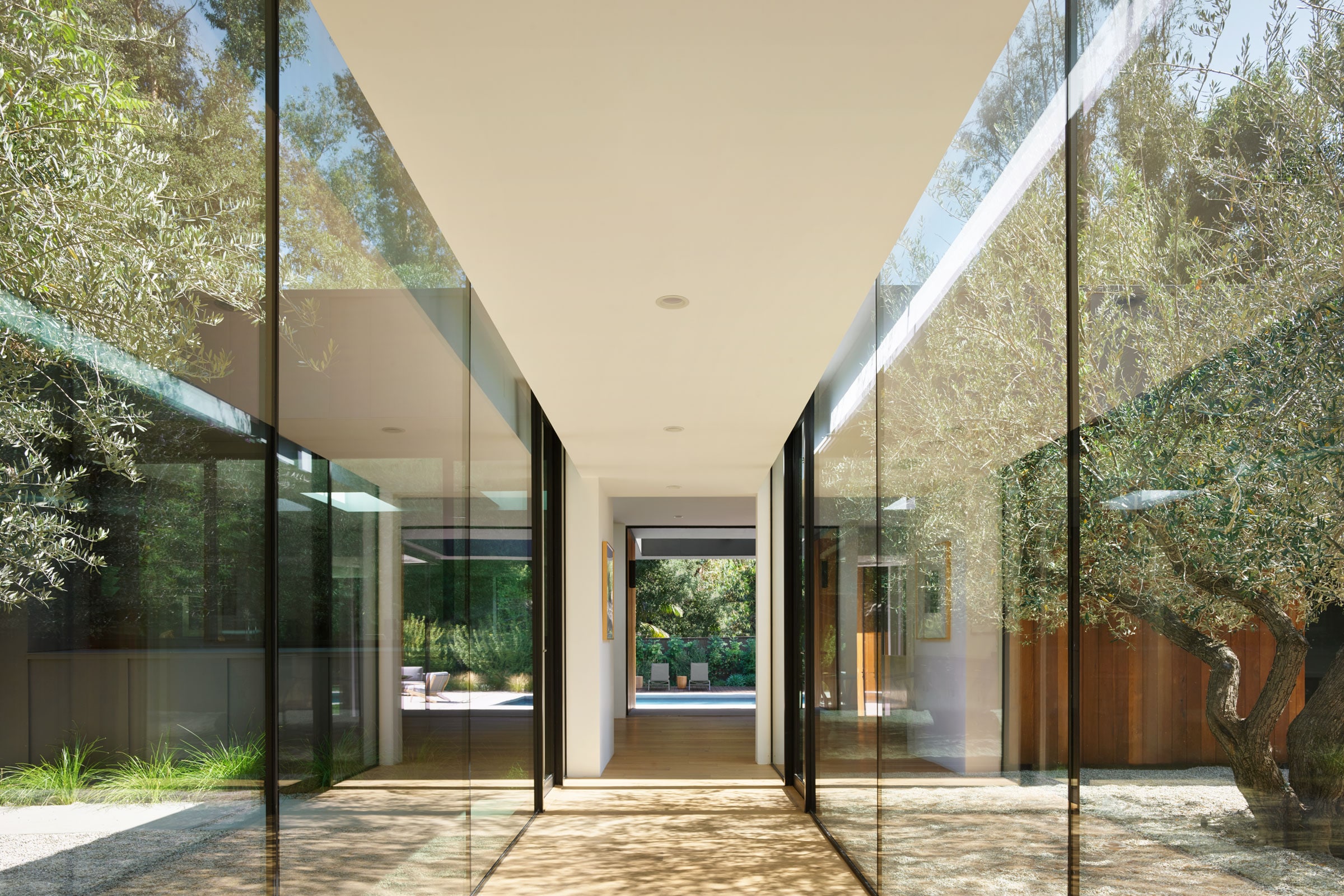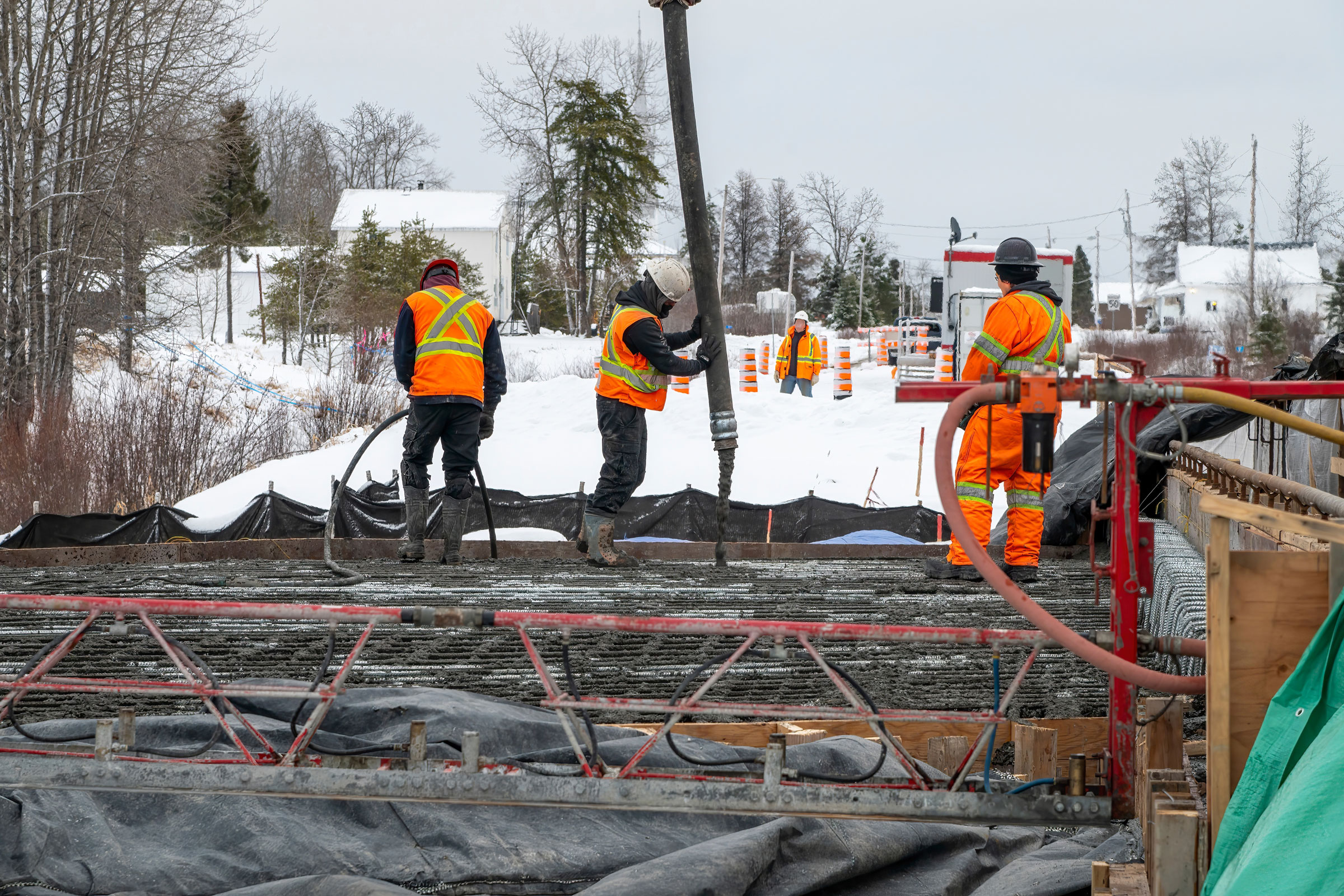Story at a glance:
- Assembledge+ designed this family house in Studio City to feel like an escape in nature.
- Large windows and skylights flood the space with natural light that bounces off wooden floors and marble counters.
- Three pavilions connected by glass hallways create the feeling of walking through nature.
When you think of LA you think about image. Larger than life people, panoramic views, and sites you have to see to believe. This perception can put pressure on sustainable residential spaces to focus on image rather than substance, but David Thompson, founder of LA architecture firm Assembledge+, wanted to create a house that focused on another type of experience.
Playing with scale and seclusion, the Laurel Hills residence in Studio City provides intimacy and privacy in a city devoted to publicity. The neighborhood itself was built upon the Laurel Canyon, and Thompson, wanting some seclusion for his growing family, saw the landscape as an asset.
“We really were looking to create a living space that would connect us with the natural surroundings,” he says, adding that his children, a teenager and a preteen, are his biggest priorities. The family wanted a space that would best accommodate them while giving them all the opportunity to enjoy the Southern California environment.

Photo by Michael Millman
The Thompson family lived in the house for two years before the firm’s founder decided to rebuild.
“For all intents and purposes the house is brand-new,” he says, noting that they tried to do as little as possible to change the surrounding environment.
Before entering the home you walk along a walkway of concrete pavers lined with wild grasses to reach a serene courtyard complete with olive trees picked by Thompson and his wife themselves.
Inside you remain connected to nature with large windows, skylights, and pocketing doors that flood the space with natural light that bounces off wooden floors and marble counters.
Back outside, the family pavilion opens to a 40-foot pool and a series of spaces for outdoor entertaining. A minimalist palette of charcoal-colored panels and Western Red Cedar serves as a neutral canvas, complementing the home’s landscape and featuring California native species.

Photo by Michael Millman
Unlike many iconic LA homes that orient themselves around panoramic city views, the Laurel Hills Residence sits in the foothills of the Laurel Canyon, where the property offers a secluded and inwardly focused experience with a majestic backdrop of lush and mature trees.

Photo by Michael Millman
Thompson wanted the residence to feel fluid, with the hallways connecting the pavilions reminiscent of the creek that once flowed through the property.
The breakfast room, kitchen, and family room are all found in the living pavilion, creating a space of communal experience.

Laurel Hills project by Assembledge. Photo by Michael Millman
Three pavilions connected by a series of glass hallways make up this residence and create the feeling of walking through nature.
The guest house/garage pavilion made of Western Red Cedar connects with the living and sleeping pavilions, made using charcoal-colored board, batten extira, and cement board siding.
“There’s a warmth to it that feels accessible and that people really seem to respond to,” Thompson says.
A deep overhang mitigates solar heat gain.

Laurel Hills project by Assembledge. Photo by Michael Millman.
While rooms meant for communal experiences have larger windows, the residential pavilion scales down the window size to provide more privacy while still allowing in plentiful light.
Skylights and a low overhang keep sunlight in the home while shielding from heavy sun exposure.
The house’s large surface area allows for more than 50 solar panels, so the residence is sustainable and doesn’t have to rely on to the city’s power grid.

Courtesy of Assembledge
Project: Laurel Hills Residence Location: Los Angeles Completion: June 2019 Size: 4,900 square feet Architect: Assembledge+ Engineer: CM Peck Interior Designer: Susan Mitnick Design Studio Landscape Architect: Fiore Landscape Design




